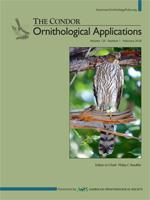This is a nontechnical book written for lay readers about a musical genius, Wolfgang Amadeus Mozart, and a species of bird, the European Starling (Sturnus vulgaris). The author is a skilled writer who has written other books that feature birds, each with a focus on bird behavior (e.g., Crow Planet). There are two interweaving narratives in the book, one dealing with Mozart, who had a pet starling, and the other focused on the vocalizations and learning abilities of European Starlings and on their ecology, particularly their impacts on native bird species. Both narratives are skillfully interwoven, and the book is both entertaining and informative.
Mozart discovered a starling for sale in a Vienna store. The bird could sing a version of his Piano Concerto no. 17 in G major. He was so captivated by the bird and its apparent good taste in music that he purchased it, naming it Star. It resided in his home and was always a favorite of the composer. When it eventually died, he held an elaborate funeral for it, far more elaborate than the one for his illustrious father, Leopold. Star is the “hook” that inspired Haupt to research Mozart, Star, and starlings and to formulate the book.
Haupt is nothing if not thorough. She did the usual author's due diligence of traveling to Vienna and learning as much as she could about the composer, including tracking down where he was eventually buried in a common grave, a custom at the time. Her writing suggests a deep personal connection with Mozart (something shared by other music lovers), as well as with his starling (something unique to Haupt). But she did more.
Haupt wanted to learn why starlings make captivating pets, so she adopted a newly hatched starling and raised it, naming it Carmen. Haupt firmly believed that she could not really understand Mozart's connection with Star unless she, herself, came to intimately know a starling. Mission accomplished. Much of the book focuses on Carmen's personality as a bird, her extensive interactions with Haupt, as well as a general treatment of starling vocalizations and behavior. Haupt did a thorough job of researching noteworthy scientific publications that range throughout the biology of the European Starling, including its ability to accomplish recursive grammar and the dynamics of starling murmuration flights. She makes a strong case for the intelligence of the species in general, using the extant literature as well as personal accounts of the behavior of Carmen. She also extensively interviewed some of the researchers to better grasp the research and its significance.
Mozart wrote a highly strange piece of polytonal music, a divertimento for two horns and a string quartet titled Ein musikalischer Spass, or A Musical Joke. For most of us, the piece is very difficult if not painful to listen to, odd and seemingly unmusical in the extreme, and Haupt suggests that it may have been inspired by Star's vocalizations. Using Google, I looked at numerous sites to learn more background on this composition and found no reference to what may have inspired it, other than that Mozart had a keen sense of humor. Haupt has a different take on the composition. She notes that when her starling, Carmen, hears the piece she “leaps to life like an opera hero” (page 178). Haupt goes on to describe her bird's apparent engagement with A Musical Joke and recounts how the late ornithologist Luis Baptista, an expert on bird vocalizations, suggested that elements of the composition indicate that listening to starling vocalizations may indeed have influenced Mozart. Inspired by a bird? Haupt points out that the composition was written off and on over a three-year period, exactly the time when Star lived with Mozart.
Ornithologists, particularly those with a fondness for classical music, should find the book interesting and informative. It might serve well for some anecdotal information to present to an introductory ornithology class. Just playing segments of starling vocalizations alongside parts of A Musical Joke (readily available on the Internet) could enhance an ornithology lab. Haupt raises good questions about why some groups of birds are such talented mimics and why complex mimicking behavior might be adaptive. She also muses over Carmen's individuality—even as the bird mimics words, segments of sentences, and music—thus capturing the potential individuality of other birds. Mozart's Starling—like other books that have focused on parrots and ravens, for example—shows that characterizing the European Starling merely as a reviled bird species (I have a friend who refers to starlings as “sky rats”) is far short of the mark. Starlings, when known as Haupt came to know Carmen and as Mozart presumably knew Star, provide major insight into what birds really are. As for Carmen, she still lives with the author and will until she completes her natural life span.
I found no errors with regard to the ornithology Haupt describes, and her treatment is done at an appropriately introductory level. Though I am a devotee of Mozart's music (except for A Musical Joke), I don't know a great deal about his life and have to take Haupt's word on that score. The book contains enough material and detail that it would have been very useful to include a thorough index, but, alas, there is no index whatsoever, an oversight that makes it frustrating to relocate areas of text to revisit. There is at least a good reference section. Any footnotes are included within the chapters.
This is a book that celebrates what a liberal arts education should be, in this case connecting music, Mozart, and a bird. I was enlightened by it, entertained, and thought about it well after putting it down. College and university libraries should welcome it.






